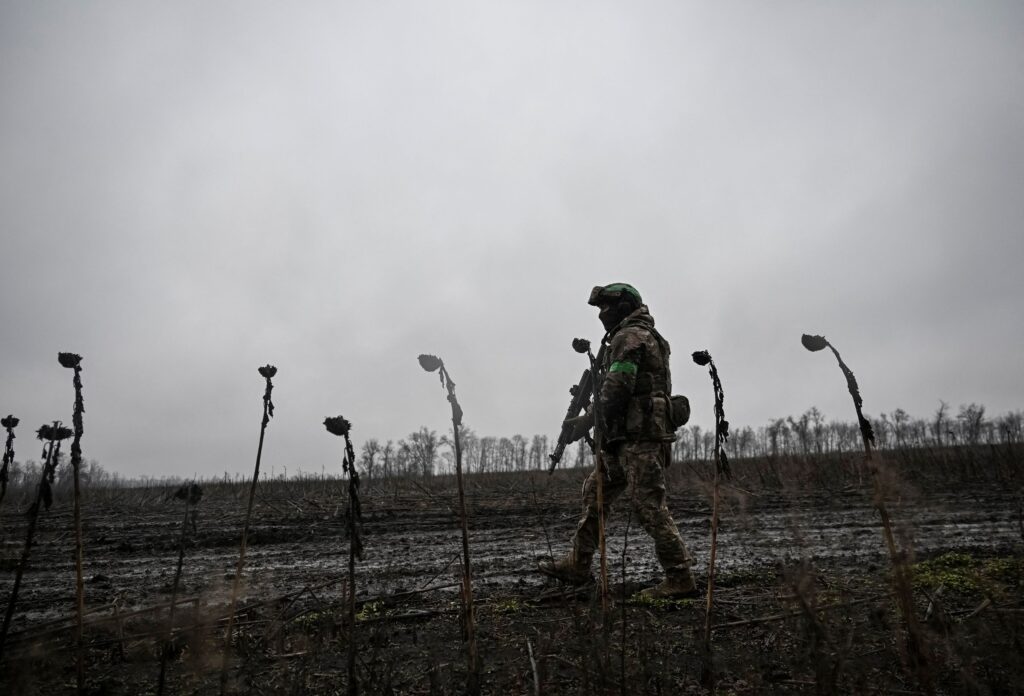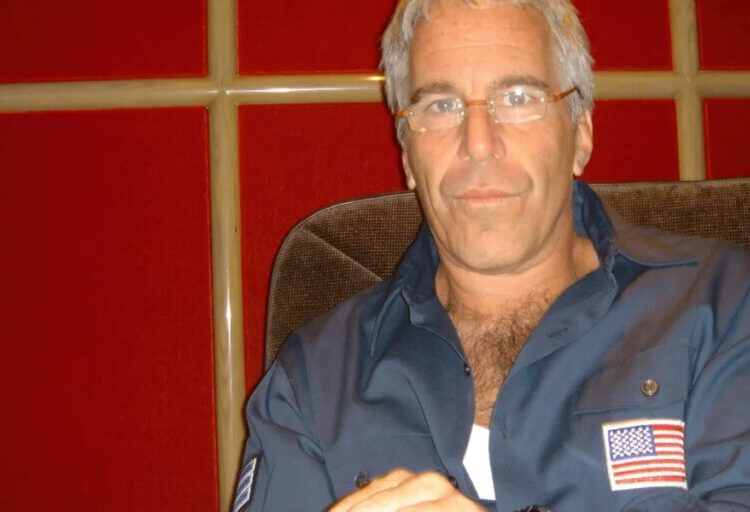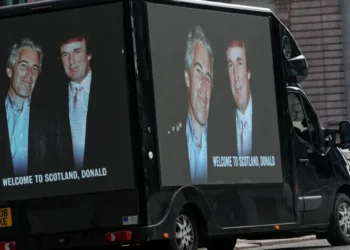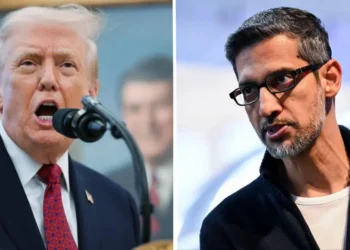Clad in military fatigues, President Vladimir Putin last week visited a Russian military command post, where commanders presented Russia’s brilliant advances, claiming to have conquered the Ukrainian city of Kupyansk — a view contradicted by open-source analysts reporting on the front line — and almost all of Pokrovsk.
But even if his generals were exaggerating again, the banner hanging behind Putin, “He who fights wins,” rammed home his message that despite it all, Russia is winning and Ukraine has no choice but to bow to Russian terms or be defeated.
Russia’s slow grind in 2025 has gained it less than an additional 1 percent of Ukrainian territory at a massive cost estimated at over 200,000 troops killed and wounded. But that is enough for the Russian president, who invariably exudes confidence in victory as he tries to shape the facts on the ground — a view that appears to have influenced President Donald Trump.
“Everywhere Russian forces, I emphasize, maintain undisputed strategic initiative,” he told a forum of the Valdai Discussion Club last month. On Friday, Trump said in an interview that Ukraine “will lose in a short period of time” the rest of Donbas. “They’re losing land.”
While Russian forces are poised to take Pokrovsk, a stubborn fortress city in Donetsk that has held out for over a year, Western military analysts still don’t see Russia as being on the brink of any kind of stunning advance that might break Ukraine’s will to fight. Instead, the staggering loss of life — barring some diplomatic intervention — is expected to continue.
Putin said Friday that Russia was happy to keep fighting if Kyiv would not discuss a draft peace plan that surfaced last week and that included several red lines for Ukraine, such as a substantial reduction in the size of its military and ceding territory to Russia that it has not yet conquered militarily.
“Overall, we’re happy with this, as it leads to achieving the goals of the special military operation by force of arms, through armed struggle,” he said, referring to the war. The plan was modified during U.S.-Ukraine talks Sunday, making it likely to be less acceptable to Russia.
Putin is willing to fight on despite the economic pain and stunning casualties that dwarf the losses of the United States in Iraq or the Soviet Union in Afghanistan because he senses U.S. and European weakness and Ukrainian exhaustion, according to analysts.
For Putin, the cost is worth it because it is not a question so much of conquering land but of reversing the Soviet Union’s loss of the Cold War and reasserting Russia’s status as a global power, said former Russian diplomat Boris Bondarev.
“He’s fighting not for villages in Ukraine. He’s fighting not for territory in Ukraine, not even for rare earths in Ukraine. He is fighting for a much bigger outcome,” he said. “He wants the United States, first of all, and Europe to admit that Russia has its exclusive sphere of influence where the United States and Europe are forbidden to interfere.”
“It’s not about territory. It depends on how long Ukrainians are going to fight, so his goal is to crush their appetite to resist.”
The Trump administration is pressing Ukraine to swiftly sign the new peace plan developed by Washington in consultation with Russian, Ukrainian and European officials. In negotiations in Geneva on Sunday, U.S. and Ukrainian delegations drafted “an updated and refined peace framework,” according to the White House, in talks both sides described as “highly productive.”
Improved performance
Since Trump took office, Putin has repeatedly deflected his calls for a ceasefire, as his forces’ grinding progress convinced him that military victory is possible.
According to Black Bird Group, which works on conflict analysis, Russia gained 1,065 square miles in the six months from May to October, compared with 742 square miles during the same period last year.
Russia has made some important military adaptations this year that have helped its forces, according to analysts. It is undertaking fewer mass “meat grinder” assaults, improving its drone force, and targeting Ukrainian drone operators and logistics to control roads, preventing any swift Ukrainian retreat.
Sam Cranny-Evans, an associate fellow with the London-based Royal United Services Institute, said Russia — with its troop advantage — was infiltrating Ukrainian positions by pushing small units forward and gathering them together for an offensive.
“This is accompanied by drone and artillery strikes against positions and especially the logistics routes. The Russians have spent time focusing on the Ukrainian defensive belt, and when successful have pushed electronic warfare and other assets further back.”
But more of its soldiers are dying, and Russia’s military culture is still brutal and blunt — with evidence of potential war crimes including strikes on civilian homes and facilities, targeting and killing civilians with drones to depopulate Ukrainian cities, and reportedly executing surrendering Ukrainian soldiers.
“Their casualty rate is still heavy,” said Emil Kastehelmi, a military analyst with Black Bird Group. “They are able to replace their losses, especially compared to Ukrainians. But still, it’s surprising that while manpower is one of their best assets, they really treat that as something that’s totally expendable.”
“They are spending a lot of resources in a war that they can’t really move decisively in one way or another,” he added.
Russia’s slow grind is difficult for Ukraine to resist, given its personnel and firepower disadvantages. Kyiv’s acute difficulties with stemming desertions and recruiting soldiers are leaving gaps in Ukrainian defenses that Russia has been able to exploit.
But military analyst Michael Kofman of the Carnegie Endowment for International Peace, who recently returned from a trip to Ukraine, described Russia’s progress so far as “lackluster,” with high losses that didn’t achieve stated objectives.
No collapse
Russia has managed to blunt Ukraine’s advantage in drone warfare, with its drone production outmatching Ukraine’s, according to Kofman. The year began with the drone “kill zone” mainly over Russian forces but now affects both relatively evenly, he said.
“In 2025 Russia’s leadership made two bets, both of which were proven incorrect. The first is that through sustained pressure at some point there will be a collapse of Ukrainian defenses along the front. The second is that through diplomacy they will engage the incoming Trump administration such that even if there is no collapse along Ukraine’s front line, there may be a collapse of Western military assistance for Ukraine, led by the United States, and then they will ultimately achieve the same outcome.”
“Despite the worsening military situation, both of those bets so far proved incorrect. The question is, are they going to make them again in 2026?” Kofman asked.
A Ukrainian official, who spoke on the condition of anonymity to discuss sensitive issues, said Moscow believed it had the upper hand on the battlefield but that in fact, “they are fighting for few blocks of little towns for several months.”
Although for years Russia’s advance has been slow, wars are unpredictable and analysts note that the situation could swiftly change, if Russia manages to exploit Ukraine’s visible exhaustion and mounting problems with troop levels in 2026.
As the year ends, Russia is poised to take Pokrovsk, with military analysts warning that Kyiv’s tendency to cling on to cities long after they lose strategic value — as it did in Bakhmut and other cities — risks higher casualties, potentially discouraging Ukrainians from joining the fight, and thus exacerbating the troop crisis.
But the Pokrovsk front encapsulates a dilemma Ukraine has faced throughout the war: balancing political expectations in the U.S. and Europe against the imperatives of the battlefield. The fall of Pokrovsk — under Russian assault since the summer of 2024 — may reinforce Russia’s propaganda portraying its slow battlefield advance as an unstoppable train to victory.
“Ukraine is engaged in a broader battle for perceptions against the Russian attempt to paint their campaign as one that is marching toward an inexorable victory, and they had most recently been successful in establishing the view in the White House that Donetsk is more or less holding,” Kofman said.
“Now, while that may be largely true, a very visible defeat of Pokrovsk could damage that narrative. And if you have an audience of one whose views are easily shaped and ever-changing, you can see the potential risk,” he added, referring to Trump, who halted U.S. military aid to Ukraine, placing the financial burden squarely on Europe.
Trump has gone from asserting in the last week of September that Ukraine could reclaim all its lost territory to stating bluntly on Friday that Ukraine would lose.
According to Lawrence Freedman, emeritus professor of war studies at King’s College London, Putin seems to be relying on Ukraine running out of military personnel, leading to the collapse of the front.
“He has yet to give even a hint of concern that the war cannot be prosecuted to a successful conclusion,” Freedman wrote in a Substack post.
Despite Putin’s confidence, Russia would still need to make much more substantial advances to force any kind of Ukrainian surrender, and it has yet to take a major city this year. Its losses are also getting harder to replace as recruitment levels drop and as economic woes brought on by sanctions and the wartime economy are expected to bite harder next year.
While Ukrainians are facing their worst winter of the war, with the power infrastructure in tatters after Russian bombardments, the population still appears to be defiant.
“There has been no diminution in the country’s determination to resist aggression, however tough and exhausting the situation appears at this time,” Freedman wrote. “Nor do they accept the Russian narrative that they are being pushed to defeat.”
Catherine Belton and Natalia Abbakumova contributed to this report.
The post Russia’s tiny advances in 2025 sold Putin on Moscow’s inevitable victory appeared first on Washington Post.




